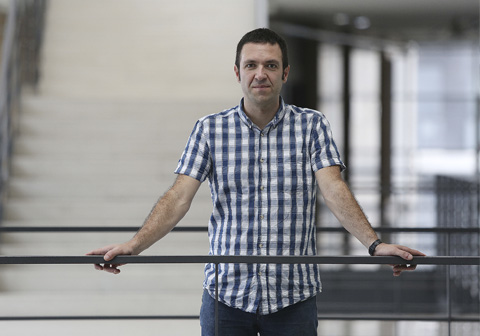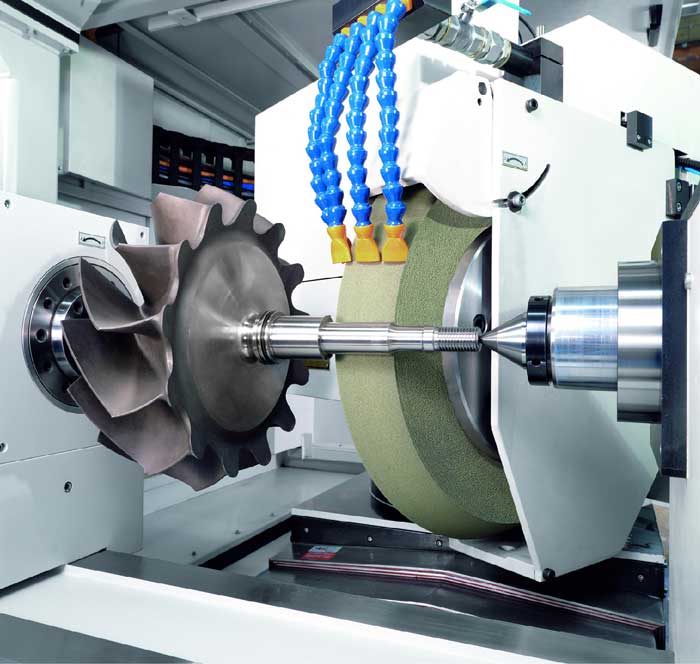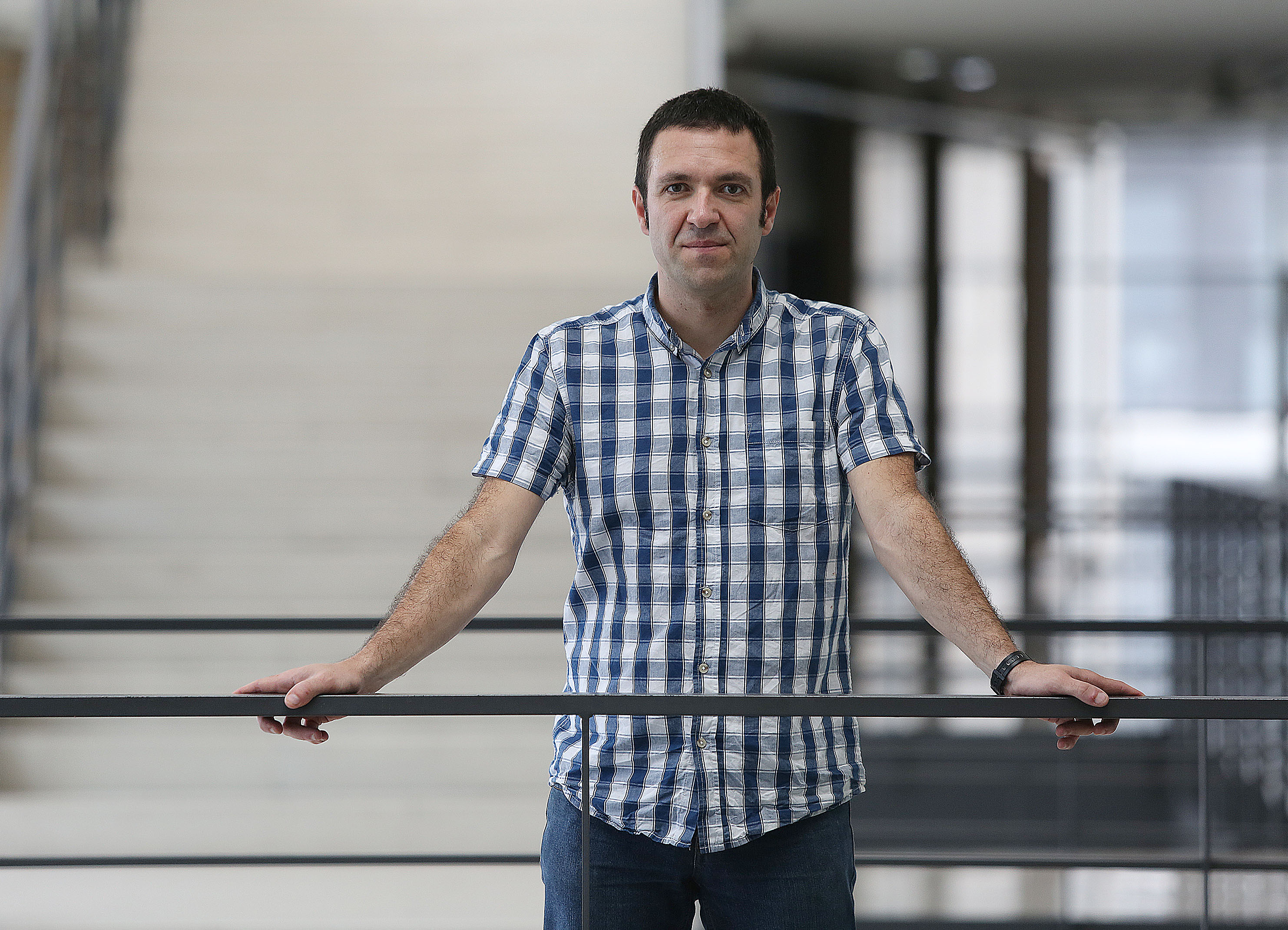In industry, the process to grind flat surfaces is important and delicate in equal measure. Any errors that might occur could be very costly because it is the final step in machining. A piece of research in the UPV/EHU's Department of Mechanical Engineering has taken a step forward in optimising this process by coming up with a new method for modelling grinding.
New paths in modelling numerical grinding
In a piece of research at the UPV/EHU-University of the Basque Country, a new method has been used to numerically model the contact zone in grinding
First publication date: 01/09/2017

An abrasive wheel that is turning and removing a small quantity of stock to produce a flat surface on a workpiece; that is grinding, the machining of flat surfaces. Despite being one of the oldest processes currently used in manufacturing, it is still hugely important in the manufacture of mechanical components because it is an indispensable process in producing parts with a high degree of finish and precision. It is used in the aircraft and automotive industries as well as in cutting-edge microproduction processes. But it has its risks, too. "If the working conditions are not appropriate, the workpiece may become overheated and the surface may burn. If it burns during the final stage, the workpiece is wasted and such items tend to be expensive ones", explained Juan Luis Osa, the author of the research. So optimising the grinding process is of great industrial interest and several research groups are developing numerical models.
So what has been achieved in this UPV/EHU research is hugely important. The Discrete Element Method (DEM), a method used in other fields, was applied in the numerical grinding modelling. "Grinding is an operation that is of great added value, and what we have achieved here is a powerful tool for optimising this process. Until now, there has been no tool for analysing the behaviour of the stone in grinding and now that this has been obtained, new opportunities have been created for modelling grinding," said Osa. "The Discrete Element Method was developed to explore the behaviour of rocks, but now we have seen that it is a suitable tool for modelling the stone, because it is capable of reproducing the granular morphology and rigidity of the random structure of the stone. Furthermore, apart from reflecting the behaviour of the stone, it also displays the development of the contact". The grinding of steels performed using vitreous alumina stones was modelled in the research, but in the future it will be possible to extend this to other stones and other types of grinding processes. "Nevertheless, the success of the model has come about as the result of the viscoplastic behaviour of the material; because it was disregarded by the previous contact models. Thanks to all this, new paths have been opened up in the modelling of numerical grinding," said Osa.
Contact zone
The starting point in all the research in this field is the contact zone; it takes the contact length and width into consideration. The width remains constant, but the length gradually changes, because the stone and workpiece are deformed by the grinding forces and contact conditions at grit level. So the length of the contact between them becomes longer than what has been deduced geometrically. "The stone becomes deformed and the contact zone changes. It is not the same to apply the same amount of heat in a broad zone or in a narrow one, because the intensity is different. Thermal models are very widespread in grinding; finite elements are used. But if the contact zone is not properly specified, the actual temperature is not modelled". Therefore, specifying the evolution in the contact zone as accurately as possible is essential when modelling the process. And that is what is in fact achieved by the DEM: "it predicts the deformation of the stone; until now nothing like this has been achieved, but with this method we can model the deflection or displacement that the stone will have by taking its composition, size, structure, hardness, working conditions, etc. into consideration".
Additional information
This study was conducted as part of the PhD thesis by Juan Luis Osa-Amilibia (Zarautz, 1976). His thesis is entitled ‘Kontaktuaren zenbakizko simulazioa artezketan' (On the numerical modelling of the contact in grinding) and was supervised by José Antonio Sánchez-Galíndez, Professor of the UPV/EHU's Department of Mechanical Engineering, and Naiara Ortega-Rodríguez, tenured lecturer in the UPV/EHU's Department of Mechanical Engineering. The researcher did one three-month internship at ENSAM in Bordeaux in 2011, and another three-month one at RWTH Aachen University in Germany in 2013.




